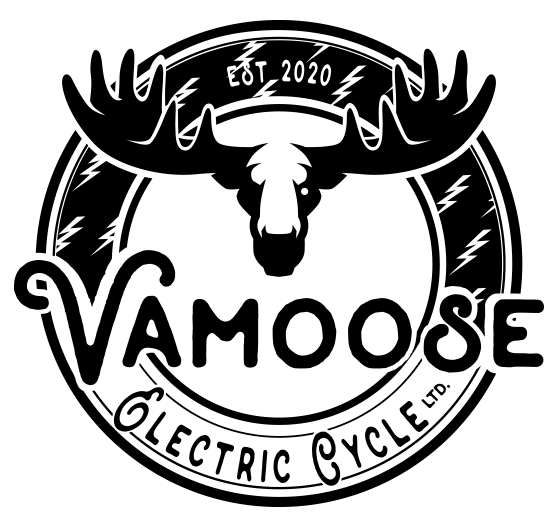How to prepare for winter riding?


Winter riding can not only be enjoyable, Vamoose believes that winter riding is an essential part of enjoying your bike!
The Vamoose mission is to deliver power-assist-bicycles that will rejuvenate and recharge YOU! Whether you are riding in +25°C or -25°C, Vamoose electric cycles are ready for the weather! Providing standard features on our fat tire bikes, like 48V 500W motors, and powerful batteries (48V 13Ah all the way up to 48V 21Ah in the Mammoth), Vamoose bikes are able to handle mud, slush and snow.
Riding your e-bike is an all-season opportunity!
In fact, our design decisions were made with harsh environments in mind. Whether you are tackling the commute to work in Edmonton, Montreal, or San Diego, Vamoose cycles can take whatever you throw at them.
That said, winter weather requires a small amount of additional preparation to ensure things go smoothly and to get the most out of your ride.
A couple of tips:
1. Take good care of the battery
- It is critically important to do the little things to protect your bike from the elements and taking good care of your battery is one of the key components. This means storing it inside when not riding and charging it only once it has warmed up to room temperature (best not to charge a cold battery). As well, if you are storing the battery for some time, it is best not to store it fully charged (normally around 70%). But please, store the batteries indoors during the winter!
- Although it is totally fine to ride your bike in below freezing temperatures, note that the battery life will be reduced, and you will likely see a drop in the available distance per charge. Vamoose builds bikes for challenging environments and we have up-sized all our batteries to provide additional life in the winter.
- As previously mentioned, you must always charge a warm battery and wait until the battery has warmed to room temperature before charging. Charging a cold battery will degrade the battery over time. Also, you shouldn’t try to warm the battery rapidly with a heater as you will likely cause damage to the battery.
- You will also want to charge the battery more often than you will in the summer or warmer months. As the battery will not be able to store as much energy in the cold, the charge that lasted a week in the summer may only last a couple of days in the winter.
2. Keep it clean and dry
-
Just like your vehicle, your e-bike will face an abundance of slush, sand, gravel, and salt on Canadian roads during the winter – and, wherever possible, avoid riding through slush. Slush is a bad combination of moisture and salt and will cause rust by moisture seeping into difficult to access parts of the bike. Although Vamoose bikes are weather-proofed, they have electronic components that will be compromised if they get too wet, and they have components that can rust. So, once you are finished your ride, it is important to keep it as clean, and as dry as possible. Wiping down your bike after each winter ride goes a long way to keeping the bike operating properly and keeping moisture away from components.

- Furthermore, you will want to apply a preventative coating, or products such as Rust Check, to your metal components including spoke nipples, and other exposed metal parts. Such compounds will help prevent the build-up of moisture on components susceptible to rust.
- Without a doubt, you will want to protect your chain. Make sure both the chain and other metal parts are lubricated regularly.
3. Use a quality winter tire
- Vamoose cycles come standard with a quality all-season tire. However, you may want to look at upgrading to the MAXXIS tires for winter riding and perhaps even move to a studded winter tire if you are planning to be riding in icy and packed-snow conditions.
4. Do a visual inspection before each ride
- As a rule, you should visually check the bike’s key components before each ride (winter or summer) including wheels, brakes, motors, battery, chain and derailleur, and wiring etc. Specifically for the wiring, you should conduct a visual inspection to ensure that they wires are connected, are not exposed to the elements, and remain in good operating condition. A visual inspection of the wiring includes making sure that the wiring are connected as they should be, that the casing or covering of the wires has not been damaged and there are not scratches or cuts to the coverings that might compromise the operation.
5. Dress for the weather
- It may seem obvious, but your choice of outerwear will make a difference in the enjoyment of your ride - so, dress appropriately and have a great time! In colder temperatures, this could mean dressing in layers and ensuring both a wind and waterproof outer shell and a warming layer underneath. In the summer, well, it is always up to you!
We're glad you're here.
Sincerely,
The Vamoose Team






